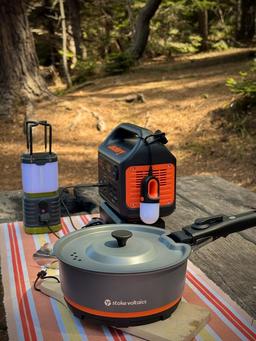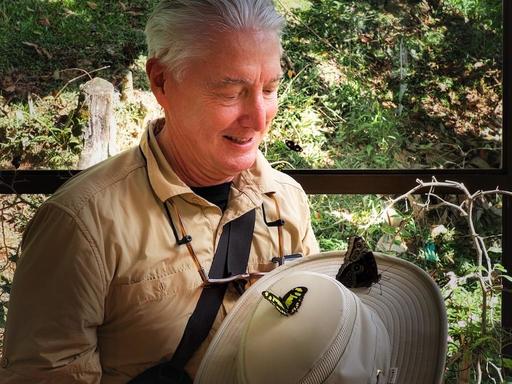This is The Digital Story Podcast 1,013, August 19, 2025. Today's theme is, "5 Tips for Tasty Food Shots on the Go." I'm Derrick Story.
Opening Monologue
I'm working on a review of the Stoke Voltaics Nomad Cooking System for TDS. It's a compact, electric kit that's super nimble and perfect for light camping photographers. As a result, I've been doing my fair share of food photography lately. I'll share some tips and tricks in the first segment of today's podcast. I hope you enjoy the show.
Tune-In Via Your Favorite Podcast App!
Apple Podcasts -- Spotify Podcasts -- Stitcher
Podbean Podcasts -- Podbay FM -- Tune In
Tasty Food Shots on the Go
Here are the talking points for today's food photography segment.
- Lighting. More often than not, diffused lighting is best for main subject.
- Composition. A tightest crop is good, but I do prefer a little environment as well. I think it gives our food shots more character.
- White Balance. A tick on the warm side tends to make food look more appealing. If you're shooting in the shade, keep in mind that the WB will be quite bluish.
- Bold Colors. I like red utensils, colorful placemats, etc. They add much life and appeal to the image.
- Details Matter. As with all still life composition, every element in the frame needs to be accounted for - Labels facing forward, utensils well-placed, etc.
Camera Industry News
Update: Kodak says it has no plans to cease operations - You can read the entire article on DPReview.com.
Fujifilm is raising the prices of its cameras again - You can read the entire article on TheVerge.com.
Fujifilm X half Is Yet Again the Best-Selling Camera in Japan (By a Lot) - You can read the entire article on PetaPixel.com.
Lightroom Sliders You're Probably Using Wrong - You can read the entire article on FStoppers.com.
Virtual Camera Club News
Inner Circle Bold. Sign up for the Annual Membership that's only $75.60 a year, you will receive all of the regular Inner Circle benefits, plus a coupon for your choice of a 2026 Online workshop hosted by me.
TDS Photography Workshops! Reserve your spot now. We have an exciting slate of online and in-person events. If you have any questions, use the Nimble Photographer Contact Form. I will get back to you ASAP.
Route 66 Photography Workshop - Oct. 14-17, 2025 - Join pro photographer and Route 66 explorer Rob Knight to explore the "mother road" this October. We will be based in Winslow and Kingman, Arizona, putting us right in the middle of the action.
Sonoma County Autumn Adventure Workshop, led by Derrick Story, starting on Nov. 4, 2025.
You can reserve your place of each of these events by visiting our Workshops Page.
Costa Rica! June 2026 - Complete information and registration here. This will be a once in a lifetime photography event. I hope you can join us.
The Nimble Photographer Newsletter is now publishing every Thursday. Readers will enjoy a variety of content spanning from short photo essays, to commentary on weekly events, to reviews of the latest and coolest photo gear.
Inner Circle Members: A big thanks to those who support our podcast and our efforts! We are having a blast at our new Inner Circle hangout, the private group I've set up at DerrickStoryOnline. We'd love it if you join us. You can become an Inner Circle Member by signing up at our Patreon site. You will automatically be added to the new hangout.
Great Photography Articles on Live View - If you check out our publication and appreciate what you see, be sure to follow us and clap for those authors. You can find us at medium.com/live-view.
If you're interested in writing for Live View, drop me a line at dstory@gmail.com.
The New Donation Kit for Carefree Shipping of Found Film Cameras - If you've discovered a film camera that's no longer being used, our new Donation Kit makes it easy to pack and ship. Just visit the Contact Form on thenimblephotographer.com, click the box next to Donating a Film Camera, and let me know what you have. In your note, be sure to include your shipping address.
Affiliate Links - The links to some products in this podcast contain an affiliate code that credits The Digital Story for any purchases made from B&H Photo and Amazon via that click-through. Depending on the purchase, we may receive some financial compensation.
Red River Paper - And finally, be sure to visit our friends at Red River Paper for all of your inkjet supply needs.
See you next week!
You can share your thoughts at the TDS Facebook page, where I'll post this story for discussion.






















